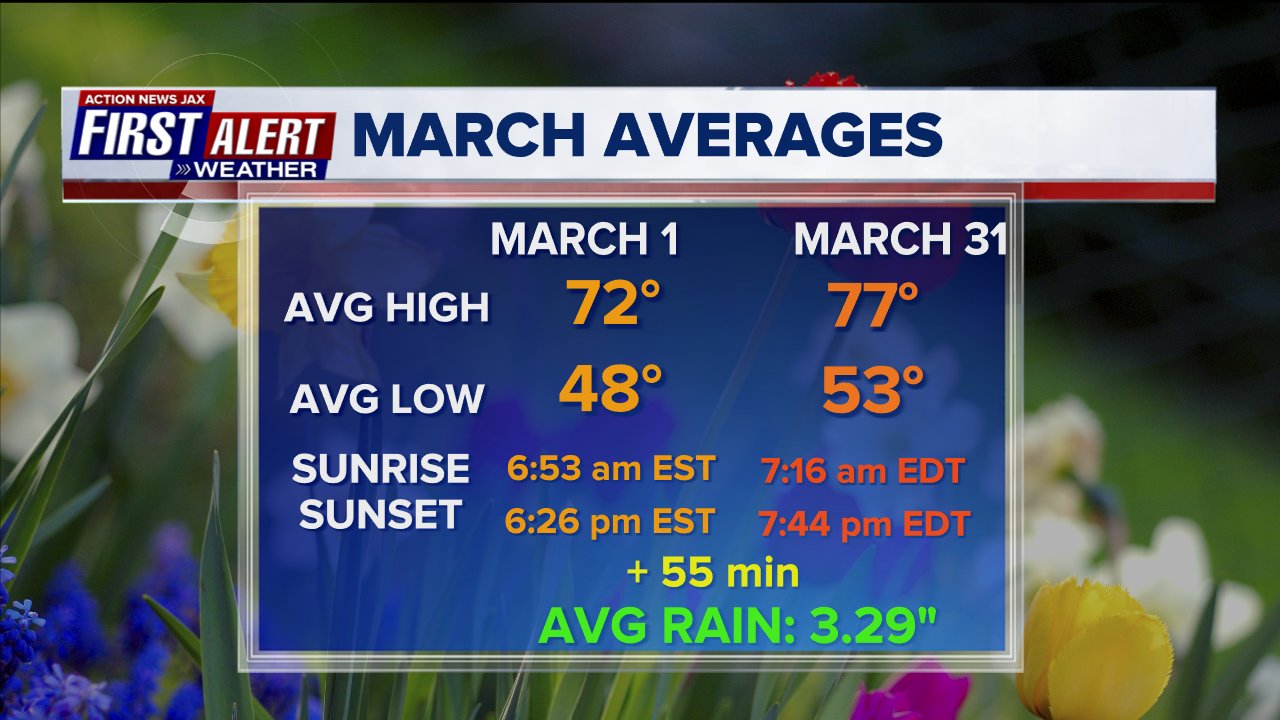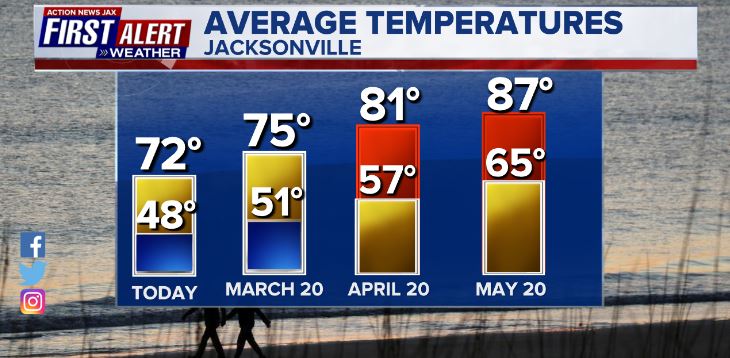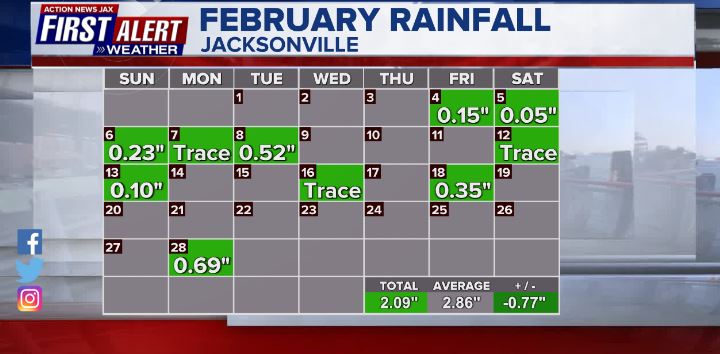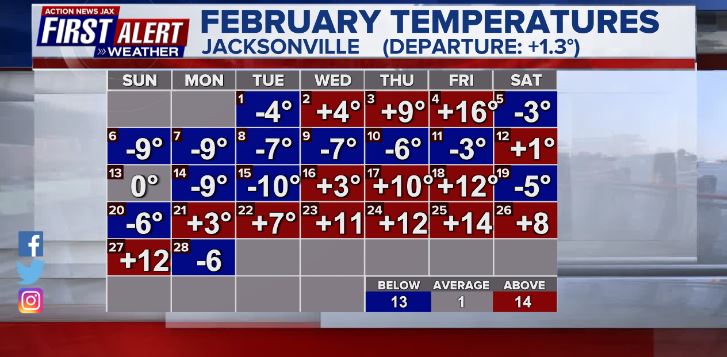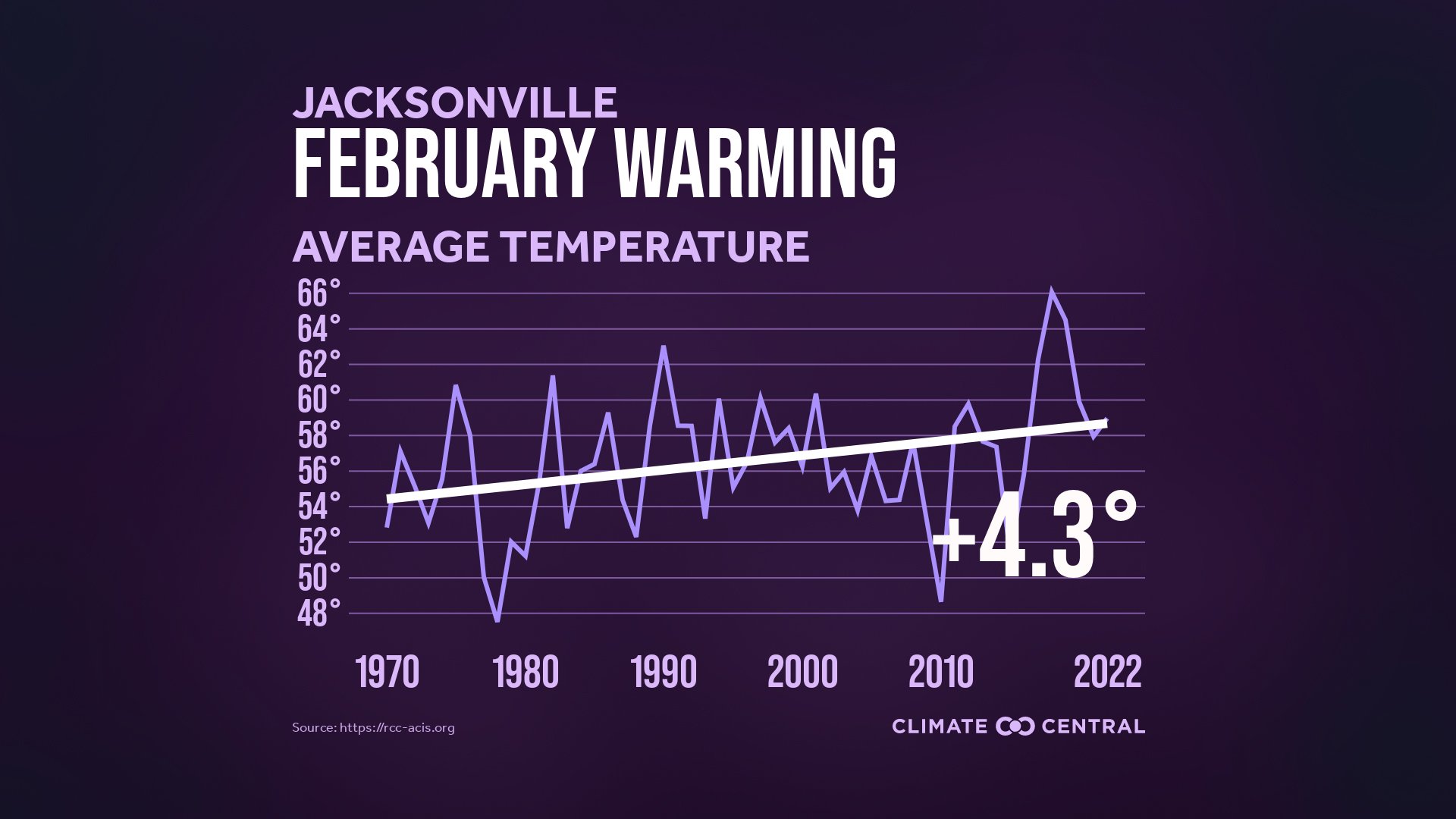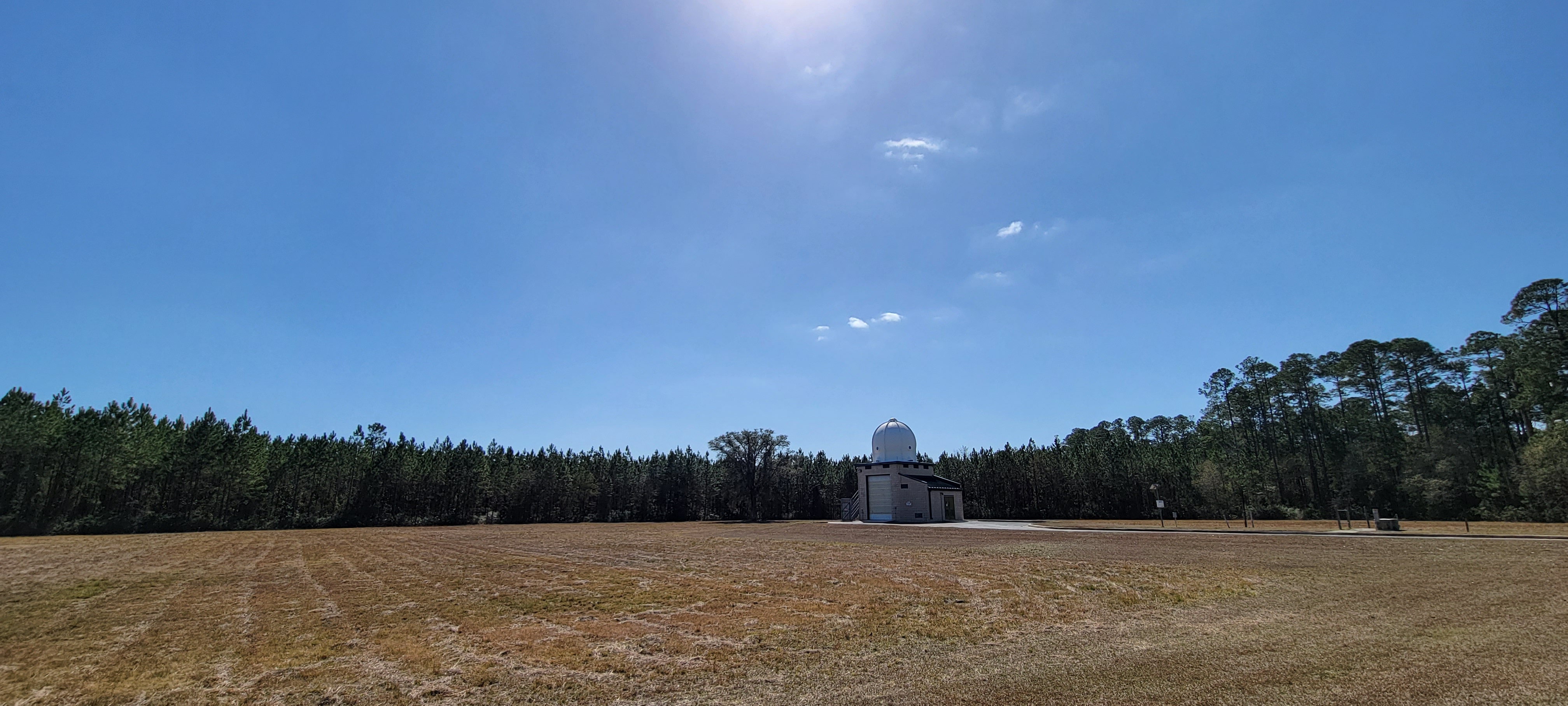Jacksonville, FL — “In like a Lion, Out like a Lamb” is the ol’ March adage but not this year - at least not for NE Fl./SE Ga. Other than the typical very high seasonal oak pollen, we are enjoying a beautiful start to March (known as ‘meteorological spring’ - March/April/May). Early indications are that the week of THE PLAYERS Championship will be warm & humid but possibly wetter too.
Avg. high temps. reach 80 degrees by mid April:
February ended up a little warmer & drier than avg. for Jacksonville:
February is the month with the biggest departure - on the plus side (warming in other words) - for Jacksonville since 1970 at +4.3 degrees:
The winter as a whole - Dec./Jan./Feb. - was the driest since 2012 & the 20th driest on record (going back to 1871). In addition, the 8 freezes (none in Dec.) were below the avg. of 13 freezes for the 3 months combined.
Precipitation for the year so far - Jan./Feb. - has been below avg. for much of the U.S. including about half of avg. for Jacksonville (3.27″ vs. the 2-month avg. of 6.24″) which raises concern about our wildfire season as we head into spring. The map below has a very La Nina (cooling of the equatorial Pacific) pattern - wetter in the far Pacific NW... the Colorado Rockies... the far Northern Plains... & particularly across the Tennessee & Ohio Valley’s extending into some parts of the Northeast. Equally La Nina-like are the dry conditions across California & much of the S.W. U.S. as well as the Central & Southern Plains, Gulf Coast & Florida. The La Nina pattern is likely to *generally* continue through a good part of the spring.
Latest La Nina forecast from various forecast models:
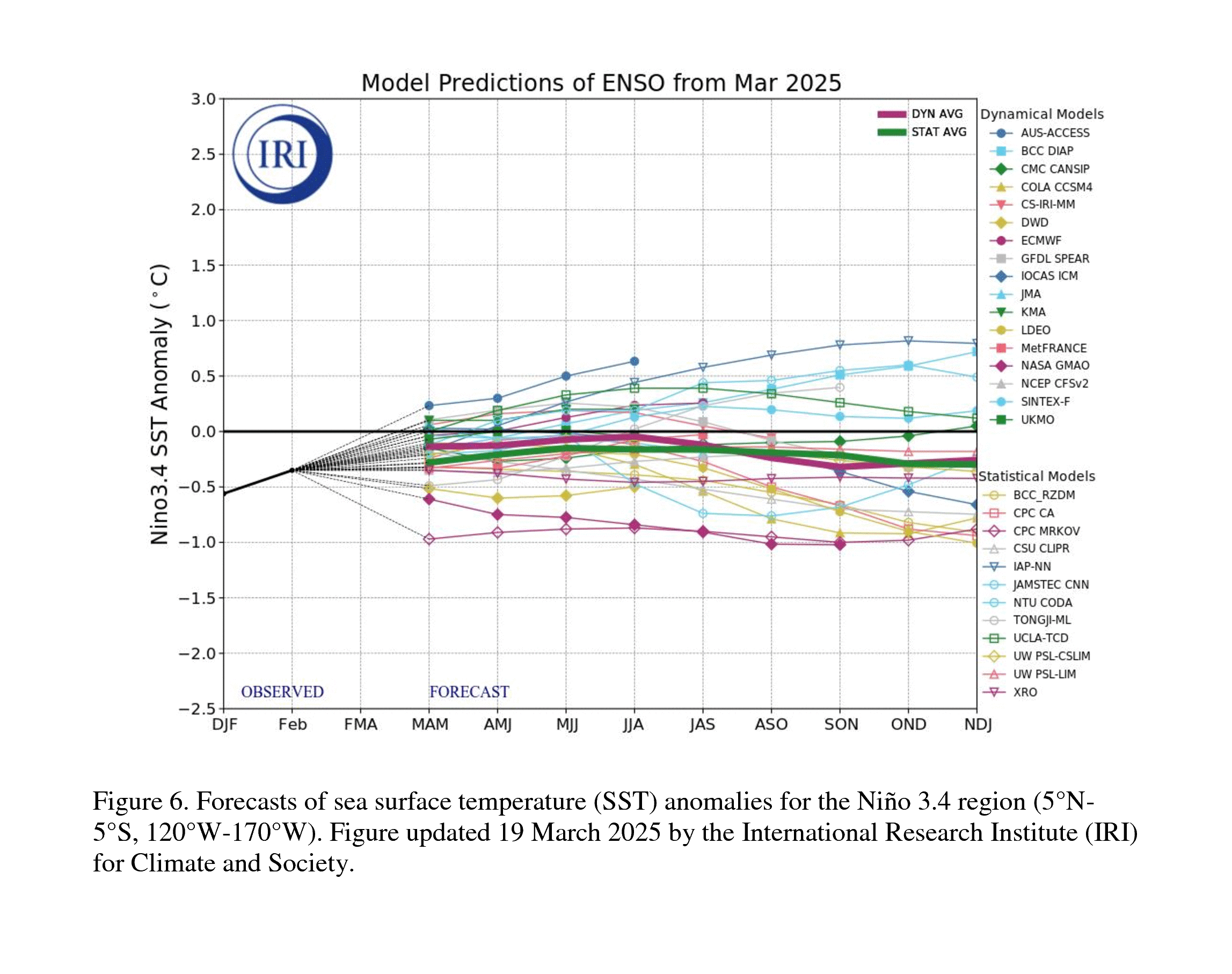
Beginning Mon., March 7th - & lasting for as long as at least 2 weeks - the Doppler Radar at the Jax National Weather Service will be out of commission for scheduled maintenance. According to our N.W.S.:
Beginning Monday, March 7th, 2022 the Jacksonville, Florida WSR-88D Doppler Radar (KJAX) will be down for approximately two weeks for an important upgrade. Technicians will refurbish and replace the pedestal, one of the most critical components of the radar, which is necessary for antenna rotation and positioning to capture data in all directions. The components are extremely heavy and will require the radome to be removed by crane and replaced when the work is completed.
The radar and pedestal were designed to last 25 years, and this radar has exceeded its life-span. This activity is necessary to keep the radar functioning for another 20 years or more.
The pedestal refurbishment is the third major project of the NEXRAD Service Life Extension Program, a series of upgrades that will keep our nation’s radars viable into the 2030s. NOAA’s National Weather Service, the United States Air Force, and the Federal Aviation Administration are investing $135 million in the eight year program. The first project was the installation of the new signal processor and the second project was the refurbishment of the transmitter. The fourth project will be the refurbishment of the equipment shelters. The Service Life Extension Program will be complete in 2023.
During the downtime, adjacent radars will be available, including: Moody AFB (KVAX), Warner Robbins (KJGX), Tallahassee (KTLH), Charleston, SC (KCHS), Tampa ( KTBW) and Melbourne (KMLB). For direct access to any of these surrounding radar sites, visit * here *.
The WSR-88D is part of a network of 159 operational radars. The Radar Operations Center in Norman, Oklahoma, provides lifecycle management and support for all WSR-88Ds.
KJAX WSR-88D radar view from the outside:
©2022 Cox Media Group


